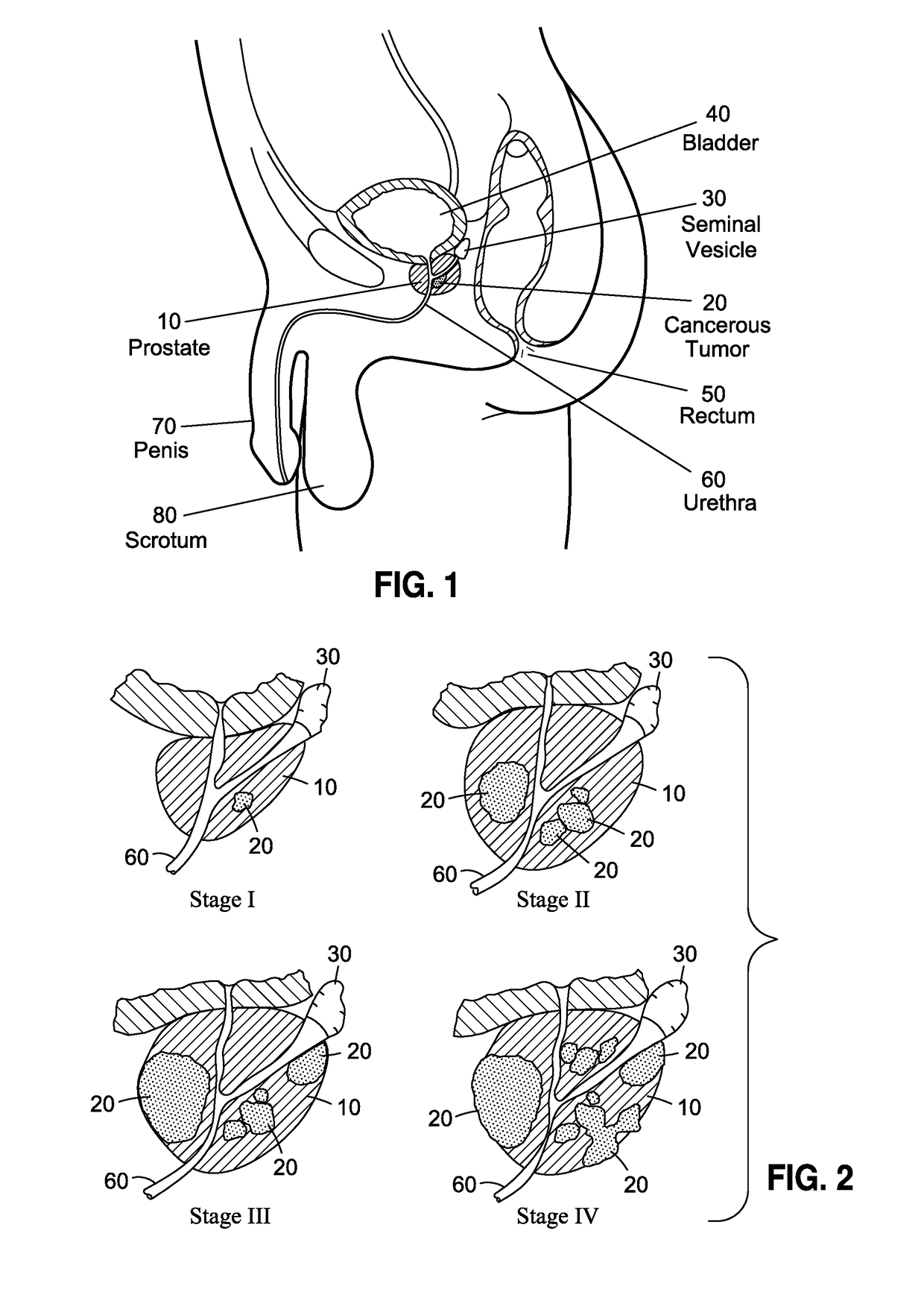Although highly ideal, the detection of cancer at such stage is considered almost accidental and is typically incidental to a separate transurethral resection of the prostate (TURP).
Given the anatomical positioning of the prostate, however, coupled with numerous drawbacks associated with the accurate diagnosis of prostate cancer, the ability to detect prostate cancer at its earliest stages is elusive and well-known to result in the implementation of harmful, sub-optimal care, as discussed below.
Management and treatment of prostate cancer is limited by access to an adequate sample of prostate tissue.
In this regard, the definitive diagnosis of prostate cancer is hampered by the limitations of acquiring
prostate gland tissue using an invasive surgical procedure known as a prostate
core needle biopsy.
Due to
physical limitations of the prostate
core biopsy, there are more that 3 million false negative biopsies reported presumably resulting from failure of the needle to pass through cancer tissue.
As is recognized, a key cause for this excessive false negative rate is the limited needle path inherent to
core needle biopsy procedures.
When the prostate
core biopsy procedure is examined closely, it is apparent that small tumors are easily missed and will continue to flourish undetected and untreated.
Also contributing to this failure to detect tumors is the small percentage of prostate tissue sampled by the
biopsy procedure.
As a consequence, even to the extent needle biopsies could access and detect the presence of cancerous tissue, such approach is only as effective as the entirety of the random sampling made about prostate organ, which needs to be sufficiently sampled completely thereabout rather than just not in the more easily accessed areas.
Taken together, the
medical risk, poor sensitivity, and patient discomfort, the prostate
core biopsy procedure is a less than ideal active surveillance tool that is limited to annual or semi-annual use.
Unfortunately, despite the availability of multiple biomarkers relating to prostate cancer, none can match the unequivocal specificity of skilled examination of prostate tissue by a pathologist.
Moreover, biomarker indications of prostate cancer are always confirmed by
tissue biopsy prior to treatment and management of the patient and the data supporting this
standard of care are overwhelming.
As such, biomarkers cannot achieve specificity equivalent to interrogation of the physical
prostate cell.
In fact, despite the belief that biomarkers may offer a
less invasive method of
patient management, data shows that a great deal of patient harm is associated with the use of biomarkers
in patient management for prostate cancer.
Along these lines, convincing evidence demonstrates that the PSA test often produces false-positive results, with reports that approximately 80% of positive PSA test results are false-positive when cutoffs between 2.5 and 4.0 μg / L are used.
There is also adequate evidence that false-positive PSA test results are associated with negative psychological effects, including persistent worry about prostate cancer.
Some clinicians have used
androgen deprivation therapy as the primary therapy for early-stage prostate cancer, particularly in older men, despite the fact such an approach is not a U.S.
Food and Drug Administration (FDA)-approved indication and has not been shown to improve survival in localized prostate cancer.
As discussed above, there is convincing evidence that PSA-based screening leads to substantial over-diagnosis of
prostate tumors.
Thus, many men are being subjected to the harms of treatment of prostate cancer that will never become symptomatic.
Even for men whose screen-detected cancer would otherwise have been later identified without screening, most experience the same outcome and are, therefore, unnecessarily subjected to the harms of treatment for a much longer period of time.
Such PSA-based screening for prostate cancer has resulted in considerable overtreatment and its associated harms, and the United States Preventative Services
Task Force (USPSTF) has considered the magnitude of these treatment-associated harms to be at least moderate.
Several researchers have reported, however, that attempts to detect prostate
tumor cells in these specimens routinely is thwarted by unacceptably low sensitivities due to the rare numbers of
prostate cells found in the
urine.
However, using these
cell concentration techniques also failed to provide adequate
cell numbers and diagnostic sensitivity.
Although exfoliated prostatic epithelial cells can be acquired by non-invasive or minimally invasive
sample collection methods, the potential for use as a reliable diagnostic method for detection of prostate cancer has not been realized due to the low numbers of
prostate cells available even following prostatic
massage.
Indeed, despite efforts to develop devices operative to facilitate collection of samples that seek to improve the probabilities that target cells of interest can be isolated and detected, such devices have proven ineffective.
Among the drawbacks associated with all such devices and collection techniques using the same include the inability to selectively deploy such devices in a manner that maximizes the potential to capture the target cells of interest at the target prostatic urethral site.
Indeed, the use of such devices is completely random and there is no way to determine, and much less selectively deploy such devices at a time when the probability of collecting target cancer cells of interest is greatly enhanced.
There is likewise no type of means for maximizing the probability that the target cancer cells will be in the
prostatic urethra, as opposed to being located deep within the prostate, as illustrated in FIG. 5, and thus incapable of being accessed by such devices.
Accordingly, despite being slightly
less invasive, such devices at best only provide a moderately increased chance of detecting the target cancer cells of interest.
Smith likewise does not anticipate the use of an exfoliating agent to increase the sensitivity of the biomarker
assay.
The prior art, however, is completely deficient in any sort of
structured methodology that can substantially increase the probability that the sought after biomarker, genetic material, or
prostate cells can be increased in
population and density so as to more easily, readily and accurately assess a patient's condition.
 Login to View More
Login to View More 


